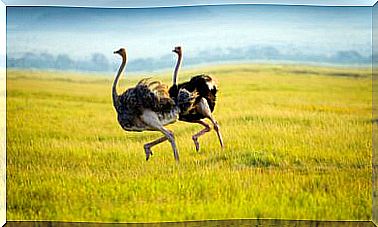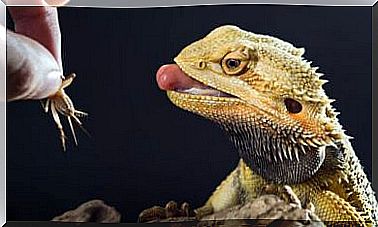Flamingo: A Fascinating And Curious Bird
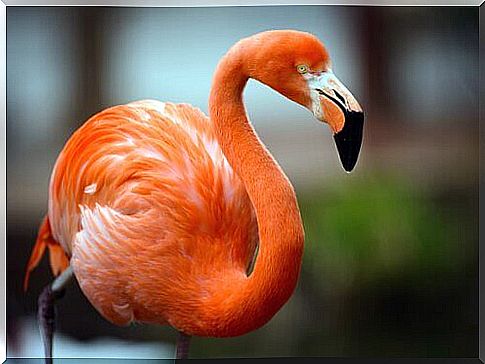
The first thing people think of when they talk about the flamingo is that elegant bird with an unusual pink color and long, thin legs. But behind this beautiful and fascinating bird there is much more. If you want to know everything about flamingos, do not miss this interesting article.
The characteristics of the flamingo
These birds, belonging to the order Neognathae , are large beings. They can measure from 80 to 140 centimeters in length and are characterized by long necks and legs. The feet have four toes, three front and one rear, joined by a membrane.
In addition, the beak is known for its “hook” shape, which allows them to dig through the mud in search of food. In addition, it has special lamellae to be able to filter the silt of rivers. It only moves the upper jaw, which is smaller than the lower one.
All the subspecies of flamingos are pink, with a lighter tone (the European one) that varies up to a darker, almost red (the variety that lives in the Caribbean). When the chicks break the egg, they have a completely light plumage, which will then change during weaning. In fact, the pink color comes from the carotenoids that each specimen assimilates through food.
Therefore, we can determine if a specimen is well fed by the state of its feathers. This shade allows them, among other things, to find a partner. If it is more pink, it is more desirable as a companion. Otherwise, if its feathers are too pale or faded, the specimen is considered to be sick or not feeding properly… So it is not suitable for producing healthy offspring!
Flamingo: food and habitat
The diet of this particular bird consists of algae, shrimp, crustaceans and plankton. To feed, the flamingo needs to live in large areas of salt or alkaline water, at low depths and at sea level (maximum up to 5,000 meters high).
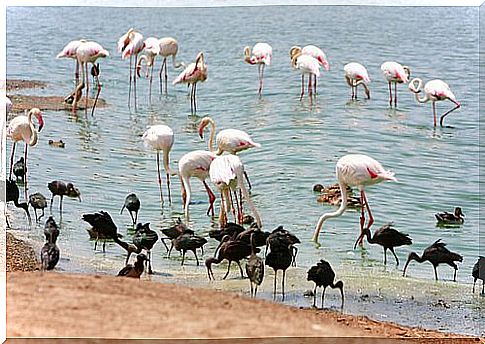
Flamingos live on all continents except Oceania and Antarctica. The three current subspecies are:
- Chilean flamingo , which obviously inhabits the countries of South America;
- the pink or larger one, present in Europe, Asia and Africa;
- red flamingo , in the Caribbean and Central America, which is the most famous, for the red of its feathers.
Although they are not in danger of extinction, the natural habitat of the flamingo is decreasing due to the contamination of water supplies and the clearing of forests. All this without forgetting the lack of rainfall, in some regions, which has drastically changed the reproductive habits of the species, leading to a significant reduction in the population.
Flamingo: reproduction and habits
Once it has reached six years, the flamingo is ready to mate. To do this, he must wait for the mating season, which coincides with the rainy season. He will have to find a partner through a courtship ritual or “dance”. Males groom their plumage and turn their heads to impress the female they wish to breed with.
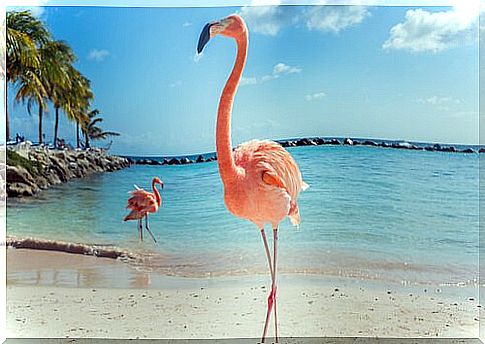
Once the couple has been created and copulation has taken place, the female lays a single white egg and deposits it in a classic cone-shaped nest, built using branches, stones and mud. The mother hatches for six weeks, and alternates with the father during this activity.
Once born, the chicks are fed with a kind of “milk” produced by the glands of the digestive tract of the parents. After a few months, the young flamingo has already developed its beak and can feed on its own, like adults. But only after they reach three years of age, their feathers acquire the characteristic pink hue.
Flamingos are known for their beautiful and fast flight, which can reach 60 km / h. But also for their long migratory journeys. Think that, in a single day, they can travel hundreds of kilometers in search of food, to feed themselves and the other members of the colony.


